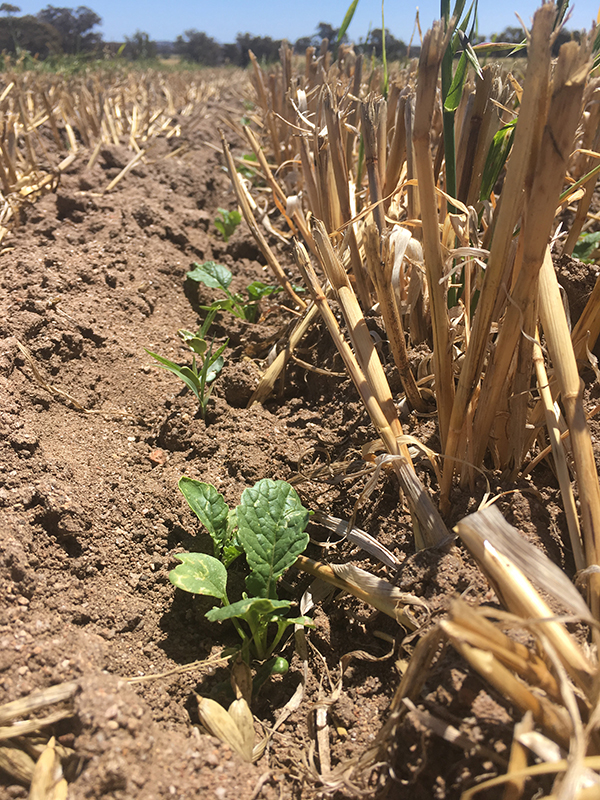This project aims to determine if:
- winter type crops can be seeded in the WA Wheatbelt in spring, survive over summer, and then grow successfully the following season
- there are viable grazing opportunities and harvestable grain for these winter types in an environment hotter and drier than previously tested
- leguminous summer crops sown in spring can provide benefits for the following autumn sown crop apart from grazing, when compared to a more traditional grass type forage crop.
Trial design
Two sites are taking part in this trial with landowners in Pingelly and Hyden. They are trialling strips of:
- Global Sunn – a new summer growing fodder legume that fixes nitrogen and which may improve the yields of the following crops
- Super Dan – a late flowering sudan hybrid forage grass.
Sown at low and high rates and in a mix with AFG Tillage Radish.
A strip of Manning Wheat was also sown for a demonstration test.
Hyola 970CL Canola may also be tested if conditions are right.
The project site in Pingelly was opportunistically sown in early October, before the project application had been accepted by Wheatbelt NRM. The landowners, and their local agronomist Jonathan England from AgInnovate, were keen to test the winter crops out and took advantage of a rain event.

The mixed plot at Pingelly taken in late October, approximately three weeks after sowing.
Background
In trials by Grain and Graze in the eastern states and South Coast of WA, sowing varieties of winter type crops in spring has shown better utilisation of summer rain, which then provides summer/autumn grazing for livestock and harvestable grain in spring.
Winter type crops need to get cold before they flower and suit spring sowing as they won’t flower until after the following winter.
Most paddocks grazed in the Wheatbelt during summer and autumn are crop stubbles, forage shrubs or dry pasture paddocks. Sowing summer crops such as sorghum and millet are practices that have been used in WA especially after summer rain. Feed produced by these summer crops has been used successfully to improve the nutritional status of grazing livestock.


